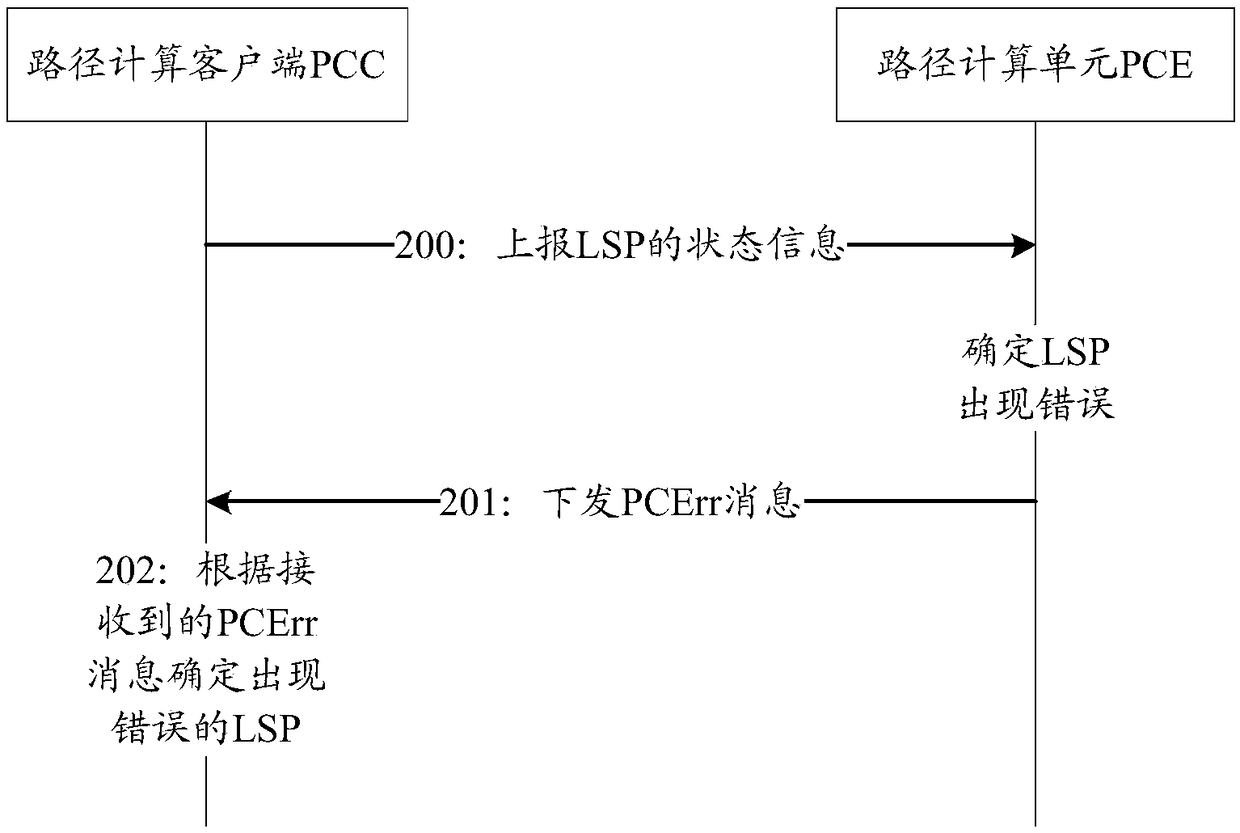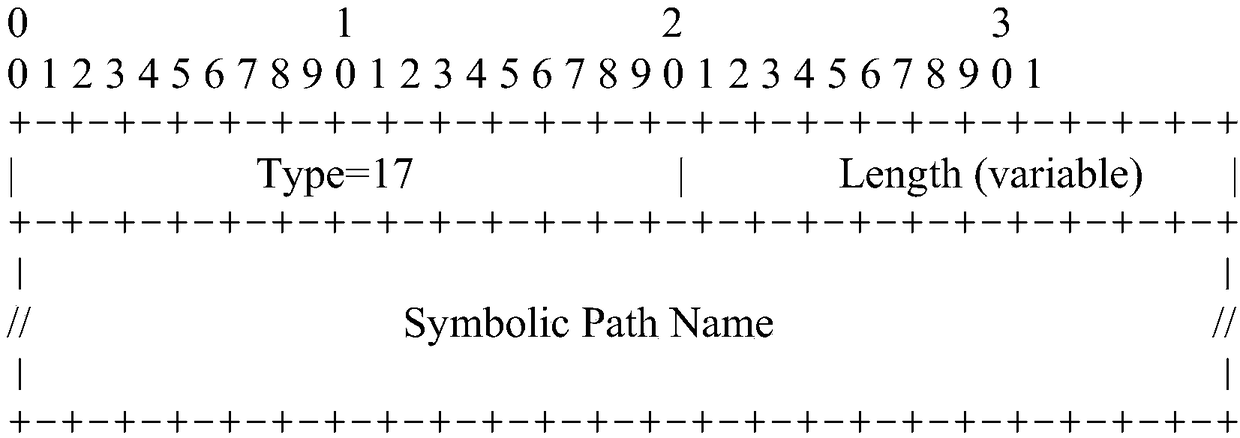Method for positioning erroneous LSP, PCC and PCE
An error and object technology, applied in the field of path calculation client and path calculation unit, can solve the problems of not being able to accurately represent the corresponding LSP of the error, and unable to process the LSP
- Summary
- Abstract
- Description
- Claims
- Application Information
AI Technical Summary
Problems solved by technology
Method used
Image
Examples
no. 1 example
[0049] figure 2 It is a flow chart of the first embodiment of the method for locating an erroneous LSP according to the present invention, such as figure 2 As shown, the method includes:
[0050] Step 200: the PCE receives the LSP status information reported by the PCC.
[0051] In this step, before the PCE receives the LSP status information reported by the PCC, the PCE first uses the existing network topology information to create an end-to-end path for the PCC that meets the constraints and policies according to the path calculation request PCReq sent by the PCC, for example , the PCE creates an SR tunnel for the PCC; the PCC sends a message to the PCC to establish an SR tunnel through the PCInitiate message, and the PCE records the current LSP status and the attribute of the path is the SR type; the PCC receives the PCInitiate message and processes it, but in the process of processing The PCC understands the LSP created by the PCE as an ordinary RSVP tunnel. After the ...
no. 2 example
[0072] In order to better reflect the purpose of the present invention, further illustrations are made on the basis of the first embodiment of the present invention.
[0073] Figure 4 It is a flow chart of the second embodiment of the method for locating an erroneous LSP according to the present invention, such as Figure 4 As shown, the method includes:
[0074] Step 400: The PCC receives at least one PCErr message; the PCErr message carries identification information of at least one LSP where an error occurs.
[0075] Preferably, the PCErr message includes an additional type-length-value TLV in at least one PCEP-ERROR object, and the TLV carries identification information of an errored LSP.
[0076] In actual implementation, the identification information of the LSP in error may include: the path name of the LSP in error.
[0077] Step 401: The PCC determines an error LSP according to the received PCErr message.
[0078] In actual implementation, when th...
no. 3 example
[0081] In order to better reflect the purpose of the present invention, further illustrations are made on the basis of the first embodiment of the present invention.
[0082] Figure 5 It is a flow chart of the third embodiment of the method for locating an erroneous LSP according to the present invention, such as Figure 5 As shown, the method includes:
[0083] Step 500: The PCE receives the LSP status information reported by the PCC.
[0084] Step 501: After the PCE determines that an LSP has an error based on the LSP status information, it sends at least one PCErr message to the PCC; the PCErr message carries identification information of at least one LSP that has an error.
[0085] Preferably, the PCErr message may include an additional type-length-value TLV in at least one PCEP-ERROR object, and the TLV carries identification information of an errored LSP.
[0086] In this step, after the PCE determines that an error occurs in the LSP, it may further inc...
PUM
 Login to View More
Login to View More Abstract
Description
Claims
Application Information
 Login to View More
Login to View More - R&D
- Intellectual Property
- Life Sciences
- Materials
- Tech Scout
- Unparalleled Data Quality
- Higher Quality Content
- 60% Fewer Hallucinations
Browse by: Latest US Patents, China's latest patents, Technical Efficacy Thesaurus, Application Domain, Technology Topic, Popular Technical Reports.
© 2025 PatSnap. All rights reserved.Legal|Privacy policy|Modern Slavery Act Transparency Statement|Sitemap|About US| Contact US: help@patsnap.com



